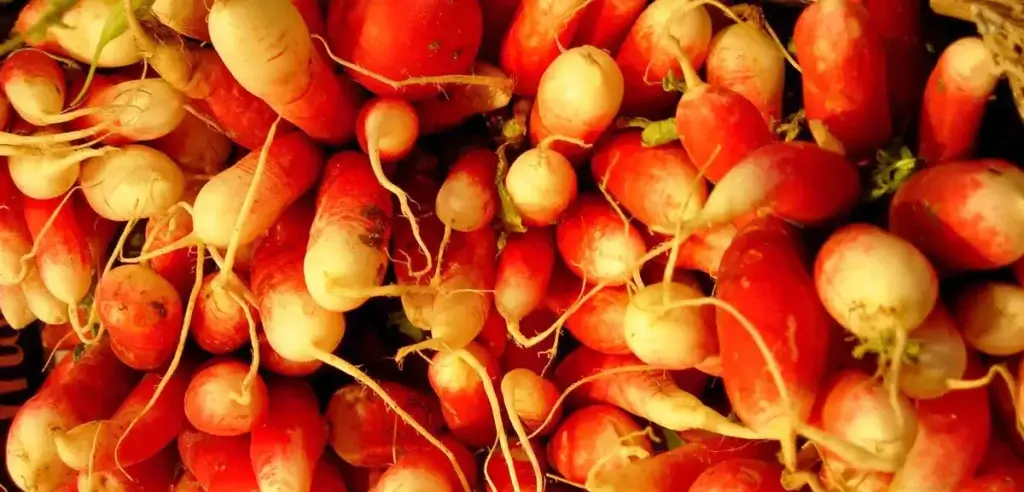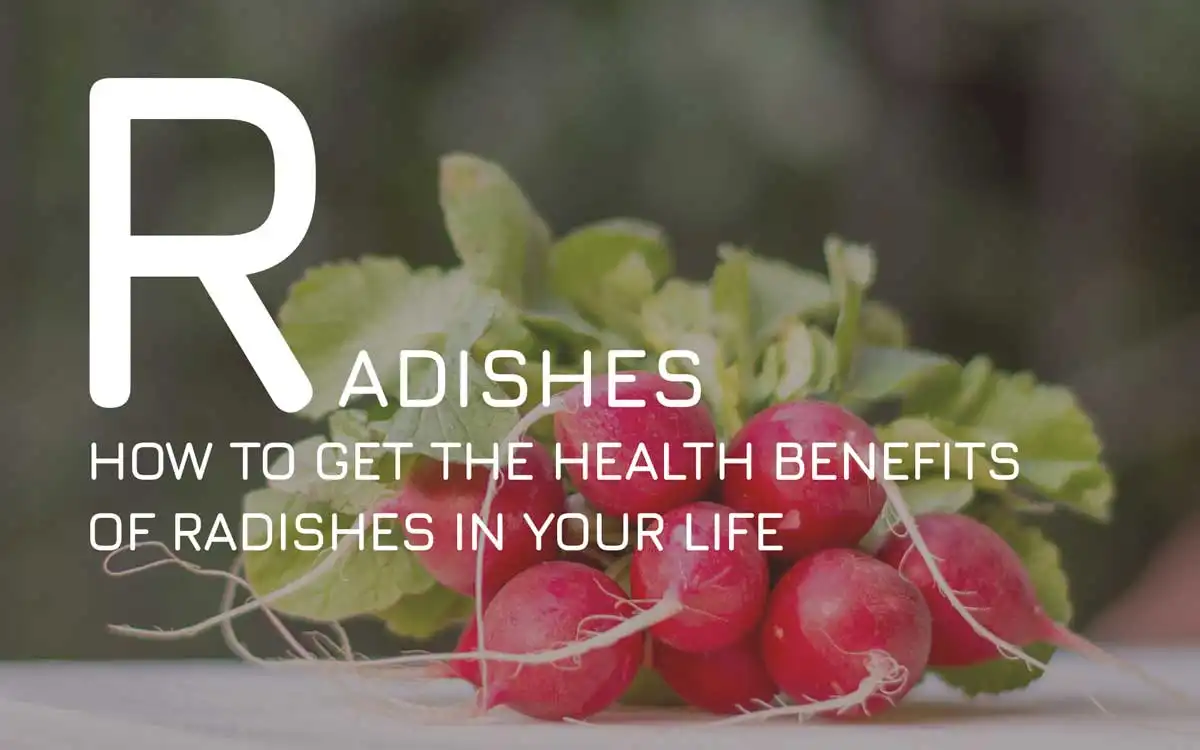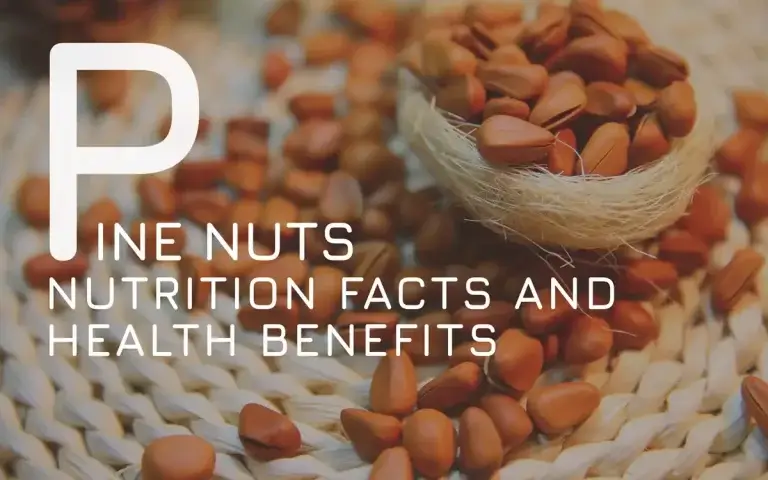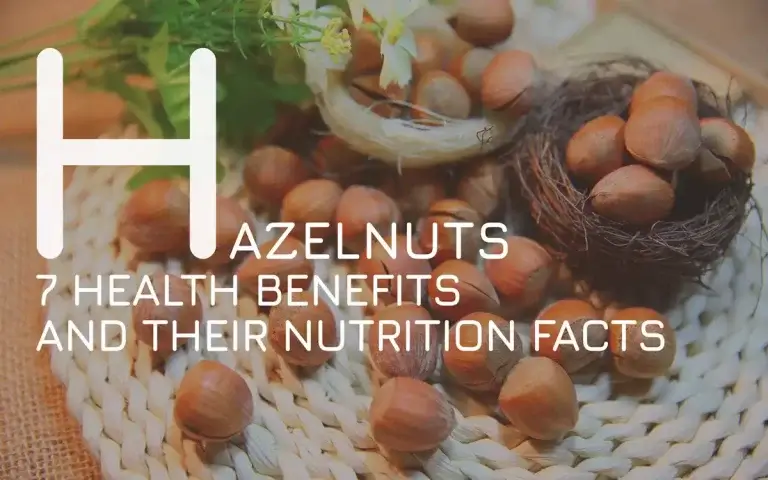How to get the health benefits of radishes in your life
The health benefits of radishes are many. If you’re looking for a nutritious vegetable that offers a wealth of health benefits, look no further than the radish. Radishes are an excellent source of vitamins and minerals, including potassium, vitamin C, and magnesium. They also contain powerful antioxidants that can help fight free radicals and improve your health. In this article, we will discuss the many health benefits of radishes and their nutritional value. We’ll also provide some delicious recipes that will help you get more of these healthy vegetables into your diet!
What is radish?
Radish is an edible root vegetable that is commonly used in salads and other dishes. The radish plant is a member of the brassica family, which also includes other cruciferous vegetables such as cabbage, broccoli, and kale. Radishes are usually small and round, with bright red or purple skin. The flesh of the radish can vary in color from white to yellow to pink, and it has a crisp, slightly spicy flavor.

Radishes are a good source of vitamin C and potassium, and they contain antioxidants that may help to protect against disease. They also contain vitamins A, C, and K, as well as minerals such as potassium and magnesium. Radishes come in a variety of colors, including white, red, pink, purple, and black. The most common type of radish is the red radish, also known as the summer radish or the breakfast radish. Radishes are typically harvested in the spring or fall, but they can be found year-round in some regions.
Types of radishes
Radishes come in many different shapes, sizes, and colors.
- Table radish or red radish: The most common type of radish is the red or table radish, which is usually small and spherical with a thin, redskin.
- Watermelon Radish: It is another popular variety. It is larger than the red radish, with pale skin and a pink interior.
- French Breakfast Radish: It is another variety that is commonly eaten. It is long and cylindrical with pink or red skin.

- Daikon White Radish: It is a type of radish that is large and white in color. It is commonly used in Asian cuisine.

- Malaga Radish: It is another large variety that is typical with violet skin and a white interior.
- White Hailstone Radish: It is a small, round, white radish, with firm flesh and a mild taste.

- Green Meat: It is a type of radish that is large and green in color. It has a mild flavor and can be eaten raw or cooked.
- Cherry Belle: It is a small, red, spherical radish with a mild flavor.
- Easter Egg: It is a small, colorful radish that comes in various colors such as pink, purple, white, and red.
- Round Black: It is a small, black, spherical radish with a pungent flavor.
- Helios: It is a large, yellow-orange radish with a sweet flavor.
- Sparkler: It is a small, red radish with a white fade at the top.
These are just some of the many different types of radishes that are available. There are sure to be one or more varieties that will suit your taste preferences!
Radish nutrition facts
Radishes are low on sugar making them good choices when you need to monitor your carb consumption. These vegetables have few carbohydrates and an average low glycemic index but are full of many vitamins and minerals. Contains nutrients per serving. A half cup serving fresh, sliced potatoes contains. Taking significant radishes in your diet can affect the thyroid hormone synthesis in your body when your thyroid fails. In fact, if possible, eat some radishes.
100 grams of fresh radish contain the following nutrients:
- 16 calories
- 3.4 grams carbohydrates
- 0.1 grams fat
- 0.68 grams protein
- 1.6 grams fiber
- 14.8 milligrams Vitamin C (20% of RDI)
- 233 milligrams potassium (9% of RDI)
- 0.05 milligrams copper (6% of RDI)
- 25 micrograms Vitamin B9 – folate (6% of RDI)
- 0.071 milligrams Vitamin B6 (5% of RDI)
- 0.069 milligrams manganese (4% of RDI)
- 0.34 milligrams iron (4% of RDI for men, 2% of RDI for women)
- 0.039 milligrams Vitamin B2 – riboflavin (4% of RDI)
- 0.28 milligrams zinc (4% of RDI)
- 39 milligrams Sodium (3% of RDI)
- 10 milligrams magnesium (3% of RDI)
- 0.165 milligrams Vitamin B5 – pantothenic acid (3% of RDI)
- 20 milligrams phosphorus (3% of RDI)
- 25 milligrams calcium (2% of RDI)
- 0.25 milligrams Vitamin B3 – niacin (2% of RDI)
- 1.3 micrograms Vitamin K (1% of RDI)
- 0.012 milligram Vitamin B1 – thiamin (1% of RDI)
- 0.6 micrograms Selenium (1% of RDI)
- 7 IU Vitamin Α (>1% of RDI)
- 4 micrograms Carotene, beta
Health benefits of radishes
Radish is good for the synthesis of antioxidant compounds e.g. catechin. These vegetables also contain high amounts of Vitamin C, which helps protect the body from damage. Besides promoting healthy eating, radishes are also beneficial to your cardiovascular health and promote a healthy lifestyle. Radish consumption also increases the production of adiponectin. Higher levels of these hormones may be beneficial in preventing insulin resistance. Radishes also contain antioxidant coenzyme Q10 to help prevent diabetes.
1. Radishes may protect against diabetes
Researchers have found that radishes may protect against diabetes. The study examined the relationship between radishes and diabetes. The study found that the ingredients in radishes, including radish root juice extracts and sprouts, may have a positive effect on glucose sensitivity and cellular protection. This protective effect may help to improve the body’s ability to regulate blood sugar levels and reduce the risk of developing diabetes.
Radishes have long been known to improve immune functions, reduce glucose consumption and reduce blood sugar levels in the body. A study showed that radishes increase insulin metabolism and insulin sensitivity directly. Additionally, the study found that radishes contain substances that regulate adiponectin and other hormones that regulate glucose levels.
These findings suggest that radishes may play a role in preventing and managing diabetes. More research is needed to confirm these results, but the potential implications are significant. If further studies find that radishes do help protect against diabetes, it could lead to new and more effective treatments for this debilitating disease.
2. Radish improves skin
Radish is not only hydrating but also contains high levels of vitamin C. Vitamin C aids in the formation of collagen, which is essential for cellular structure. It helps fight free radicals, reduce folate, and boost antioxidant synthesis while preventing inflammation. The radish’s nutrients, such as B vitamins, zinc, and phosphorus, can help the skin heal. Additionally, the radish’s antibacterial properties help heal dry, cracked skin while preventing infection. Consequently, radish is an excellent choice for those looking to improve their skin.
3. Very Hydrating
Did you know that radishes are very hydrated? In fact, they contain high water content of 93.5g/100g! That’s about as good as cucumber, which weighs 92 g in 100 grams. Keeping hydrated is important for the human body to function properly. Symptoms of dehydration include a dry skin complexion and headaches. So, make sure to incorporate radishes into your daily meals and consume the water that your body needs every day! Not only will this help keep you hydrated, but it will also ensure that the nutrients in your body are provided at the proper level.
4. Radish supports digestion
A diet rich in fiber has numerous health benefits, including improved digestion. Radishes are an excellent source of fiber, providing 1.6 grams per 100-gram serving. Research has shown that consuming radish leaf extract can improve digestion and that radish extract can help strengthen the lining of the stomach, making it more resistant to ulcers.
In addition, radishes are thought to stimulate the production of bile, which helps to break down fats and makes them easier to digest. For these reasons, radishes may be especially beneficial for people who suffer from digestive disorders such as Irritable Bowel Syndrome (IBS) or Crohn’s disease. Including radishes in your diet is a simple way to boost your intake of fiber and support your digestive health.
5. Radish antioxidants may help fight cancer
Radishes are an excellent source of antioxidants and nutrients, including zinc, vitamin C, and folate. They also contain compounds that may offer health benefits, such as sulforaphane and indoles. Studies suggest that these substances may help protect against chronic diseases, such as heart disease, diabetes, and cancer. Additionally, radishes may help to lower blood pressure and enhance immune function. Also, radishes have antifungal properties that may help to fight infection.
Radish contains glycosinolates sulfurous components that occur in Cruciferous vegetables. The compound prevents the genetic mutation of cancer cells. Research on humans is ongoing to see if eating foods high in glucosinolates can also help protect against cancer but so far the results have been promising.
6. Radish supports heart health and lowers blood pressure
Diets rich in anthocyanins, such as radishes, have been linked with decreased cardiovascular disease. These meals affect cholesterol and blood pressure as well. Radish is one of the vegetables that are effective in reducing bad cholesterol levels in our blood. They are also able to reduce blood pressure by dilating and relaxing the blood vessels. This promotes better blood circulation throughout the body which can be very beneficial for heart health.
Additionally, the high potassium content in radishes can also help to maintain a healthy heart rhythm. Potassium is an essential mineral that helps to regulate the electrical activity of the heart. Eating a diet that includes radishes can help to keep your heart healthy and functioning properly.
7. Radish Enhances Immune Function
Radish is an excellent source of Vitamin C. Radish also has sulfur compounds which have antimicrobial properties and can help to boost the immune system. The phytochemicals in radish can also help to protect cells from damage. In addition, radish is a good source of fiber which can help to promote good gut health. Research has shown that a healthy gut microbiome is essential for a strong immune system. Therefore, including radish as part of a healthy diet can help to enhance immune function.
8. Radish helps fight fungus
Candida albicans are the most common type of fungus found in humans. This particular fungus can cause a number of problems, including bacterial infection and vaginal bleeding. In addition, Candida albicans are extremely difficult to fight. However, new research has shown that radishes may offer a potential solution. Radishes contain a drug called RsAFP2, which has been demonstrated to be effective in treating Candida albicans strains. This new discovery offers hope to those who are struggling to overcome this difficult fungus.
When it’s best?
Radishes are one of the earliest vegetables to mature, typically taking around 4 weeks from seed to harvest. However, there is a trade-off for this speedy maturity – radishes can quickly become bitter if left in the ground for too long. For the best flavor, radishes should be harvested when they are still small and tender. The size of radish can vary considerably depending on the variety, but it is generally best to harvest when they are around 2-3 inches in diameter.
This is usually around 4 weeks after planting for most varieties. If radishes are allowed to grow too large, they will often develop a tough texture and a hot, sharp flavor. Timing is everything with radishes, so make sure to keep an eye on them as they mature!
What to look for when buying radishes?
When selecting radishes at the store, look for firm, brightly-colored roots with fresh-looking greens. Avoid radishes that are soft or have brown spots, as these may be signs of slug damage or dehydration. It is also important to check the radish greens for any signs of wilting or browning, as this can indicate that the radish is past its prime.
How to store radishes?
Radishes are a crunchy and refreshing addition to any meal, but they can be difficult to store. If you’re not careful, radishes will quickly go bad. The key to storing radishes is to keep them cold and dry. Radishes can be stored in the refrigerator for up to two weeks. To prolong their shelf life, remove the greens from the roots and store them separately in a plastic bag. When you’re ready to use the radishes, simply trim off the greens and wash the roots under cold water. With proper storage, your radishes will stay crisp and fresh for a long time.
Preparing radishes
Radishes are versatile vegetables that can be used in a variety of dishes. They can be eaten raw, roasted, or pickled, and their sharp flavor pairs well with both sweet and savory foods. If you’re looking to add some radishes to your next meal, here’s what you need to know about preparing them.
First, select radishes that are firm and have brightly colored skin. Avoid radishes that are soft or have any blemishes. Once you’ve selected your radishes, rinse them under cold water to remove any dirt or debris. Next, trim the root end and the top of the radish, leaving about 1 inch of the stem attached.
You can now slice or dice the radishes according to your desired recipe. When cooked, radishes will become slightly sweeter in flavor and lose their characteristic bite. So if you’re looking for a little bit of spice in your dish, be sure to add the radishes near the end of the cooking process. With a little bit of preparation, radishes can add flavor and crunch to any meal.
How to use radishes(Recipes)
Radishes can be enjoyed in a variety of ways. For a simple snack, try slicing them thinly and adding them to a salad. Or, for a more substantial meal, roast them with some other root vegetables. You can also use radishes as an ingredient in many different recipes. Here are just a few ideas:
-Sautéed radishes: Sauté thinly sliced radishes in olive oil or butter until they are slightly softened. Add salt and pepper to taste.
-Radish soup: Puree-cooked radishes with chicken or vegetable stock, cream, and seasonings of your choice. Top with croutons or shredded cheese for extra flavor.
-Roasted radishes: Toss halved or quartered radishes with olive oil and salt. Roast at 400 degrees until tender, about 20 minutes. Serve as a side dish or add to salads or grain bowls.
-Pickled radishes: Soak sliced radishes in vinegar, water, and salt for at least 30 minutes ( longer for a stronger flavor). Enjoy as is, or use as a topping for burgers or sandwiches.
Risks and Side Effects
While radishes are safe for most people to eat, there are some risks and side effects to be aware of. Eating large amounts of radish may irritate the digestive tract, and some people may develop a rash or allergic reaction. If you experience either of these problems, stop eating immediately and consult your doctor.
There is no evidence that radishes are harmful during pregnancy or breastfeeding, but some women may want to avoid them as a precautionary measure.
Individuals with gallstones should also avoid eating radishes, as they may exacerbate the condition. In general, radishes are a healthy and nutritious food, but it’s important to be aware of any potential risks before consuming them.
Final Thoughts
In conclusion, radishes offer a wide range of health benefits and are an excellent source of nutrition. They are low in calories and fat, and they contain fiber, vitamins, and minerals. Radishes also have a high water content, making them an excellent choice for hydration. Additionally, the antioxidants in radishes can help to protect against some chronic diseases. Overall, including radishes as part of a healthy diet can offer numerous benefits.
FAQs
By NutriWins team










